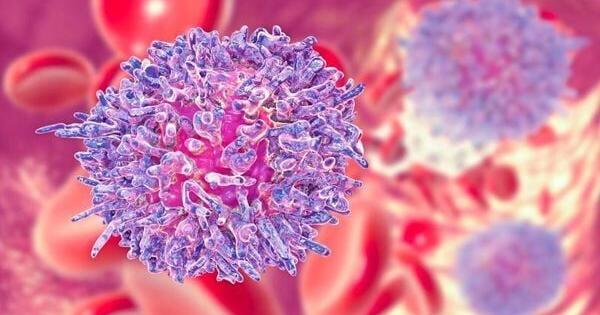Cancer and neoplasms
Risks for MDS/Leukemia Increased for Survivors of Common Lymphoid Neoplasms
THURSDAY, Aug. 17, 2023 (HealthDay News) — Survivors of common lymphoid neoplasms (LNs) have increased risks for therapy-related myelodysplastic syndrome/acute myeloid leukemia (tMDS/AML), although risks have been lower in more recent years, according to a study published in the July issue of eClinicalMedicine.
Lindsay M. Morton, Ph.D., from the National Cancer Institute in Bethesda, Maryland, and colleagues identified 1,496 tMDS/AML cases among 186,503 adults who were treated with initial chemotherapy/immunotherapy for first primary LN and survived one year or longer.
The researchers found that the highest risks for tMDS/AML occurred after precursor leukemia/lymphoma (standardized incidence ratio [SIR], 39; excess absolute risks [EAR], 30 per 10,000 person-years), Burkitt leukemia/lymphoma (SIR, 20; EAR, 24), peripheral T-cell lymphoma (SIR, 12; EAR, 23), chronic lymphocytic leukemia/small lymphocytic lymphoma (SIR, 9.0; EAR, 27), and mantle cell lymphoma (SIR, 8.5; EAR, 25). After all other LN subtypes except hairy cell leukemia and mycosis fungoides/Sézary syndrome, elevated risks were also observed (SIRs, 4.2 to 6.9; EARs, 4.9 to 15). For patients treated more recently, tMDS/AML risks were significantly higher after chronic lymphocytic leukemia/small lymphocytic lymphoma (SIR2000-2005, 4.8; SIR2012-2017, 10), significantly lower after Hodgkin (SIR2000-2005, 15; SIR2012-2017, 6.3) and marginal zone (SIR2000-2005, 7.5; SIR2012-2017, 2.3) lymphomas, and nonsignificantly lower after mantle cell lymphoma, lymphoplasmacytic lymphoma/Waldenström macroglobulinemia, and plasma cell neoplasms. Trends for EAR and cumulative incidence were generally similar to those of SIR. Median survival was 8.0 months after tMDS/AML.
“Population-based data show that patients treated with initial chemo/immunotherapy for most lymphoid neoplasms may face increased tMDS/AML risks, but that tMDS/AML risks have evolved consistent with changes in treatment practices for certain subtypes,” the authors write.
Abstract/Full Text

